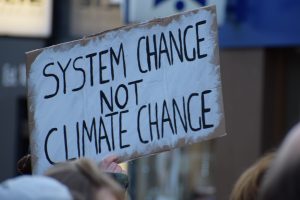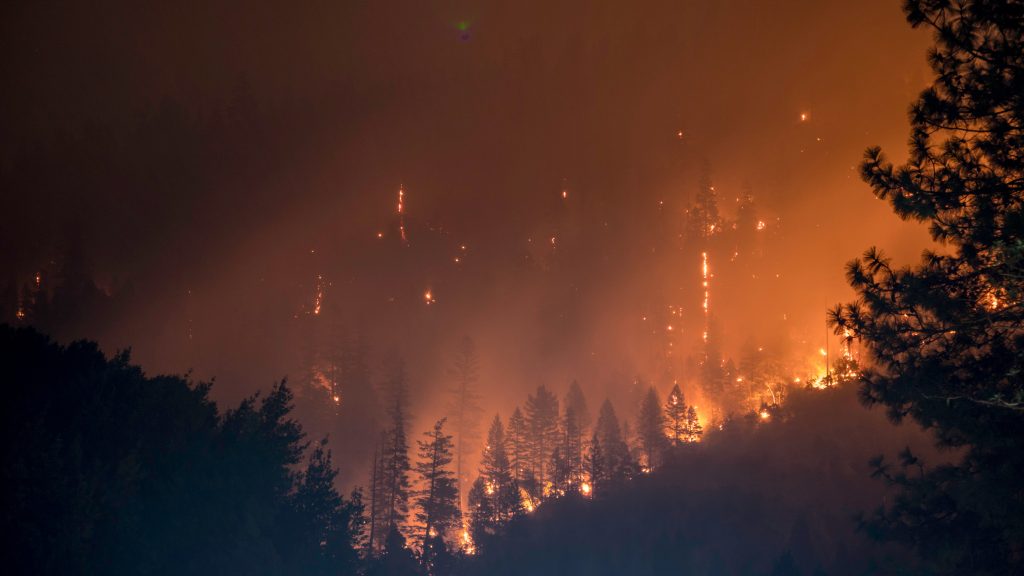Transformative Resilience

As we respond to ongoing global issues like the COVID-19 pandemic and climate change, it is clear that the return to “business-as-usual” approach will not suffice. COVID-19 has drastically changed and reshaped our socio-cultural, economic, and political practices. Climate change-driven ecosystem disruptions have altered the way our natural world functions. As we return to the definition of resilience, which is “the capacity [of a system] to tolerate, absorb, cope with, and adjust to changing social or environmental conditions while retaining key elements of structure, function, and identity,”17 it can be understood that this conceptualization is no longer useful. Our system, in the context of climate change, has become obsolete socially, environmentally, economically, and politically. To retain ‘key elements of structure, function and identity’ in our current system would be futile, as they are evidently no longer sustainable.
Modern resilience scholars argue that the only way forward is through transformative resilience. While other types of resilience, such as adaptive resilience stimulate evolutionary change, transformative resilience which “comes with ‘metamorphosis’, that is, a transfiguration of culture that is triggered by the shocks and disturbances that come with radical newness and reinventions, reassessments and rediscoveries.”34 In other words, transformative responses change, rather than modify, social and eco-systems in order to support desired system transformations, rather than a return to a previous state.36 Transformative resilience, thus, describes the creation of a fundamentally new system with sustainability at its core, giving us the ability to create opportunity, strength, and innovation from disruption, stress, and change.36
Transformative Resilience in Context
Dr. Caroline Shooner discusses the Llnagaay ‘Waadluxan Gud Ad Is society and their initiative to create an arts and event centre in Haida Gwaii, returning the land to the Haida Nation, and plans for the future of the project (10:29)
Blaine Grinder discusses the process of decolonization, plurality of perspectives and the importance of intention (2:39)
Case Study: Transformative Resilience in the Face of Wildfires
Wildfires continue to increase in frequency and break records each year all over the world. BC, in particular, has been hit very hard by wildfires in recent years. The 2021 fire season was one of the worst on record, with 1642 wildfires burning approximately 869,279 hectares.37 These fires triggered 181 evacuation orders and cost $718.8 million in damages. Not only were these fires hugely destructive to the environment and ecosystems, but also to human populations and infrastructure. On June 30, 2021 the Lytton Creek Fire destroyed much of the town of Lytton in Southern BC, causing two deaths. This tragedy prompted many Canadians to call for action against ecosystem disruptions such as wildfires and demand better land management and policy reform surrounding wildfire prevention and response by promoting social-ecological resilience. It has been found that current land and fire management approaches do not consider the implications of rapid climate and human infrastructure development changes rendering them not only ineffective, but actually heightening risks to humans and ecosystems.36 These risks include reduced air quality due to smoke, loss of important infrastructure like hospitals or homes, and habitat destruction.36

The integration of social-ecological resilience, as discussed earlier in this chapter, into wildfire prevention and response requires the application of various resilience approaches, particularly that of transformative resilience. Basic or absorptive resilience refers to a system’s capacity to return to its original structure and composition. Adaptive resilience refers to a system’s capacity to adapt to a new condition by modifying fundamental aspects of the system.29 Finally, transformative resilience, as scholars McWethy et. al. explain “is sometimes referred to as bouncing forward, and it is typically required when conditions are changing rapidly (for example, due to climate change) such that returning to pre-disturbance conditions is untenable; this approach allows for an intentional transition to a new system that will be desirable under future conditions.”36
In the case of wildfires, supporting basic resilience would be done by allowing natural succession of affected forests and vegetation to recover, rebuilding affected communities, and mitigating health impacts, such as smoke.18 While facilitating post-fire recovery is vital, this approach, however, does nothing to mitigate or prevent wildfires from wreaking the same havoc in the future, especially in locations with high wildfire vulnerability.
Supporting adaptive capacity presents a more effective approach as it is focused on lessening the frequency and severity of wildfires. Rather than trying to restore ecosystems to pre-fire conditions, McWethy et. al. describe actions supporting adaptive resilience as “designed to help communities adapt to changing climate, fuel and land-use conditions by directly shaping the human and natural template in ways that acknowledge the present and future inevitability of fire.”36
Ways in which wildfire policy might be strengthened in terms of adaptive capacity include improving fire protection and response as well as reducing susceptibility of both communities and vegetation. Specific examples might include thinning of forests and prescribed burning treatments to control populations of flammable and invasive species around vulnerable communities to minimize the destruction of human infrastructure.36 These measures, however, require a large deal of political and collective action and must be sustained over the long-term in order to be effective at managing persistent risks. The success of these responses, as McWethy et. al. explain “depends on collaboration at multiple levels: individual property owners, builders and developers, local and regional decision makers, and broader government and agency decision makers.”36
Finally, transformative resilience seeks to transform ecological conditions by building a web of tactics from adaptive resilience across many communities and land ownerships in order to prevent persistent vulnerability and costly recovery efforts. In the context of human communities, examples of transformative resilience action include using building materials resistant to ignition from ember showers or refraining from rebuilding in a location with high risk of recurrent wildfires, though these solutions will differ between landscapes and wildfire vulnerability. Transformative resilience action to protect ecosystems includes using periodic prescribed burning, thinning, and other treatments as well as allowing for fire-catalyzed transitions in ecosystems to occur.36 McWethy et. al. elaborate on the latter, “the conversion of dry mixed-conifer forest to open woodland–savanna and shrubland ecosystems following recent high-severity fires in the southwestern US […] provides opportunities to accept, and in some cases support, ecological-type conversions, especially in drier settings where a changing climate makes the return of forests unlikely.”36 This type of action would decrease frequency and severity of future wildfires.
Diminishing our vulnerability to wildfires through transformative resilience, as with any societal transformation, requires a shift in social, political, and economic values such as accepting that we are deliberately altering social-ecological systems by allowing fire-resistant actions such as prescribed burning or providing increased financial support to those affected by wildfires to create new systems, rather than rebuild old ones, for example. The transformative resilience approach requires embracing the important and ever-changing role of fire in social-ecological systems and seeking unprecedented and transformative long-term solutions.36 As McWethy et. al. explain, “adopting, and even championing, a broader approach to resilience thinking allows managers, stakeholders, and policymakers to consider adaptation and transformation as appropriate and desirable responses to wildfire, especially when the current system is degraded or misaligned with historical conditions that are unlikely to return.”36 While basic resilience seeks to restore, transformative resilience, inspired by adaptive resilience, seeks to build something new and sustainable from the ashes of what once was.
George Abbott discusses wildfire preparedness and the importance of partnerships, especially with Indigenous communities (3:57)

